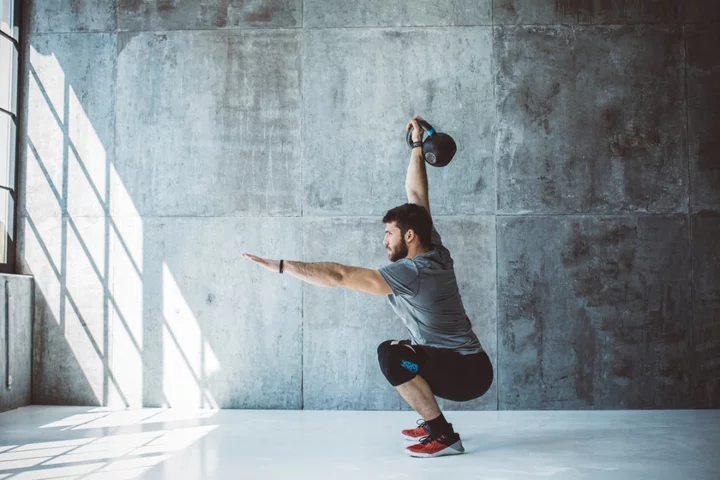
Sports culture is ‘intimidating’ and putting people off working out, study finds
Intimidating sports culture is putting millions off working out – as many are feeling alienated by the exercise industry. A poll of 2,000 adults who don’t exercise found 68 per cent feel too embarrassed to go to the gym because they don’t fit the mould of the “typical” gym goer. More than three-quarters (78 per cent) don’t find sports adverts motivating and 33 per cent say adverts actually put them off working out. However, 55 per cent would be more likely to exercise if they saw everyday people in sports adverts. And 20 per cent would be more inspired to do something active if there were more realistic expectations set by the industry. A further 29 per cent say sports brands aren’t relatable to them, and a quarter think exercise culture is intimidating. While 49 per cent wish they had more confidence to exercise. The research was commissioned by ASICS as part of its ‘New Personal Best’ campaign, which is calling out performance-obsessed exercise culture in partnership with mental health charity Mind. Gary Raucher, European vice president for the sportswear brand, said: “The sports industry has been telling us for years that the only thing that matters is a faster time, a longer distance, a higher score, and more reps. “Although it’s aimed at motivating people, our research shows it’s having the reverse effect and instead creates an intimidating culture that’s putting people off exercise – something we’re committed to change.” As part of the research, survey respondents were shown a series of marketing images from sportswear and athletic brands and asked to comment on how the pictures made them feel. Just over one in 10 (12 per cent) said the images made them feel ‘inferior’, 13 per cent felt intimidated and for seven per cent, the images even made them feel depressed. It was found 16 per cent typically come across these types of images on social media, with 42 per cent admitting seeing boastful exercise posts makes them feel like a failure – even before they’ve started exercising. Hayley Jarvis, head of physical activity at Mind, added: “For people who don’t exercise, taking that first step can be daunting, especially if they’re also experiencing a mental health problem. “When you add the pressure of performance so often seen in sports marketing or on social media, for some it can feel impossible to get started as they don’t feel like they’re ‘good enough’. “Getting active can play a vital role in helping us stay and live well with mental health problems.” The survey, which was conducted via OnePoll.com, also found 23 per cent of non-exercisers feel too embarrassed to start now, and nearly one in five (18 per cent) worry people would judge them as they are too unfit. Over three quarters (77 per cent) admitted they are aware of the mental health benefits of exercise. But despite 61 per cent saying they have either personally experienced a mental health problem or know someone who has, it is still not motivation enough to get them moving. Mental health activist and TV personality Dr Alex George, who is supporting the ASICS campaign, said: “As someone who is passionate about the benefits of exercise on mental health, it’s upsetting but unsurprising that people feel excluded and alienated by the sports industry. “I too have felt intimidated and insecure after comparing my performance and results to others. “People need to know that regardless of the type of exercise they do, or the times or distances they achieve, any movement benefits mental health and is something that should be celebrated.” The ‘New Personal Best’ campaign features everyday people and is encouraging them to share their own ‘personal best’ images on social media using the hashtag #NewPersonalBest on World Mental Health Day, 10th October. One of which is Tom Durnin, whose inspirational story caught the sports brand’s attention when he finished in last place at the London Marathon 2023. He said: “For me, it was all about crossing that finish line no matter how long it took me. I run purely because it makes me feel good, I don’t worry about my time or being the slowest. “I never thought I’d ever be the face of a sports campaign but I’m honoured to be partnering with ASICS to encourage more people to move for their mental health. “If my story can inspire at least one person to take the first step that’s all I could ask for.” Read More Brits reveal advice they would give their younger selves - including investing in property Girls in UK have much lower confidence than male peers, study finds Average person completes 90 online tasks a day Israel-Hamas conflict: How to talk to teenagers about distressing news stories How to get rid of bedbugs: Signs and symptoms amid threat of UK invasion How to support someone coming out in their 30s and beyond
2023-10-11 16:59

How to support someone coming out in their 30s and beyond
Coming out can be hard at any age, but by the time you’re well into adulthood it may feel terrifying, and be completely life-changing. Many people who come out in their thirties and onwards may have wanted to for a long time but not felt safe enough to do so. As October 11 marks National Coming Out Day, it’s important to reflect on how, if and when people can share their authentic selves. “I wasn’t raised in a time when it felt safe to express attraction to women,” says author and creative mentor Fiona Fletcher Reid, who came out last year at the age of 35. “I wasn’t sure about my sexuality until I had psychosexual therapy and was able to explore all the layers of internalised homophobia and repression that I had accumulated over my 35 years,” she says. So, how you can support someone who is going through it? Don’t assume everyone is the same Not every person’s coming out looks the same, and some LGBTQ+ experiences are not universal. “Coming out is a personal experience and because it is often physically and emotionally dangerous to be openly queer, lots of people never feel able to be open,” says Fletcher Reid, now 36. “Some people might feel free to come out once they have ended a particular relationship, or after meeting people who they feel safe around. “For others, like me, it’s that we don’t consciously acknowledge our sexuality until we are a lot older and have the confidence to work through the emotional implications and real-life consequences that come with that,” The writer, from Glasgow, was going through a divorce at the time with a man she’d been with since the age of 17. “During therapy, I talked a lot about the pain I was experiencing during intercourse as well as my general anxiety around sex. It wasn’t until I’d built up a trusting relationship with my therapist that I felt able to discuss the fact that I thought I might be gay and I did not expect that to come up, so I was just as surprised as everyone else when I came out.” Don’t question their authenticity Validate what the person who has come out is saying. “Don’t say, ‘Are you sure?’ because you can rest assured that the person coming out to you has thought long and hard about this,” says Fletcher Reid. “Casting self-doubt on someone when they have opened up a vulnerable part of themselves to you is hurtful.” Don’t question them about their sex life It’s no one else’s business. “Please don’t ask about whether they have been intimate with anyone, or any other sort of suggestion that they need to ‘prove’ their sexuality to you,” she stresses. Consider what they feel and accept that it is a big deal They are probably feeling “a mix of emotions, including excited, happy, empowered and scared for their safety”, says Fletcher Reid. “Sadly coming out can still cause huge ruptures in relationships so be aware that this is a huge moment for them and comes with real consequences. “Dismissing their experience as ‘not a big deal’ because you think it’s ‘normal to be gay’ now is a dangerous and false narrative.” It may sound simple, but just listening and supporting them is vital. “Be there to listen and try to celebrate all the new things that they are exploring as they come out, whether that’s dating, meeting new people or finding ways to experiment with their identity through fashion,” says Fletcher Reid. “Repeat often that you love and care for them and that you accept this evolution of them, that you are happy to see them happy.” Suggest they find community “Encourage them to talk to other people who have been through similar experiences if you can,” she says. “As much as friends and family want to understand what they are going through, it is far more validating to talk to someone else who has come out later in life and understands the emotional intricacies of the experience. “They can also hopefully show them that there are good times ahead.” Thank them for sharing with you “It is a privilege that someone trusts you with coming out, especially later in life. Tell them that you are honoured to have been trusted with this information, and reassure them that you will keep it private until they are ready to tell other people,” Fletcher Reid suggests. “The best reactions that I had from people were seeing their joy that I had discovered this important part of myself, and that had a huge impact on my ability to feel hopeful amidst the pain caused by my divorce. “Allowing them to feel conflicted and guilty and offering reassurance that they have the right to be themselves will make them feel so much happier.” Read More Israel-Hamas conflict: How to talk to teenagers about distressing news stories Autumn décor ideas for a seasonal refresh Why you shouldn’t tidy your garden too much in autumn World Mental Health Day: 5 ways to beat anxiety and change your life Alternative veg to grow for next season How to spot if your child is struggling with their mental health – and what to do next
2023-10-11 13:49
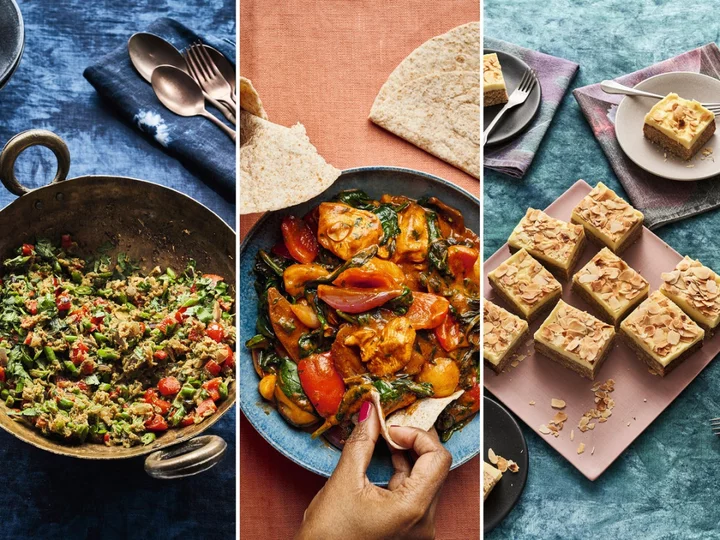
Spice up your life: Three recipes from Nadiya Hussain’s new book that bring the heat
I didn’t grow up eating crab, but I absolutely love the sweetness, which you can’t really get from any other seafood,” says former Bake Off winner Nadiya Hussain. “This natural sweetness is quite a wonder and it really does work well cooked with the slight crunch of the green beans and the simple spicing, making it a bhuna I cook time and time again.” Crab bhuna Serves: 4 Ingredients: Oil, for frying 4 cloves of garlic, crushed 2 red onions, finely diced 2 red peppers, finely diced 3 mild red chillies, finely diced 1½ tsp salt ½ tsp ground turmeric 3 tsp curry powder 180g green beans, finely sliced 3 x 145g tins of shredded crab meat in brine, drained Large handful of chopped fresh coriander Method: 1. Start with a large non-stick pan or wok and put it onto the hob over a high heat. Add the oil and as soon as it is hot, add the garlic and cook until golden. 2. Now add the red onion, red pepper and red chilli along with the salt, turmeric and curry powder. Add a splash of water and the green beans and cook till there is no liquid left. 3. Now add the shredded crab meat. As you add the crab meat, make sure you remove any excess moisture. A bhuna is meant to be dry so we want to avoid any excess liquid. Cook with the lid off over a high heat for 10 minutes. 4. Take off the heat, add the chopped coriander and mix through to serve. Saag aloo chicken jalfrezi “This is the kind of dish that you often see being served up at an Indian restaurant and while it may look complicated, it doesn’t have to be at all,” says Hussain. “This is like the Bengali stir fry you never knew you needed. It’s spiced, fast and a feast for the eyes.” Serves: 4 Ingredients: Oil, for frying 3 dried red chillies 4 cloves of garlic, thinly sliced 400g tin of cream of tomato soup 1½ tsp salt 4 tbsps brown sauce 4 tbsp art masala mix 2 red onions, quartered 2 red peppers, cut into large chunks 560g tin of potatoes, halved 200g cooked chicken 80g fresh baby spinach Handful of fresh coriander 2 spring onions, thinly sliced For the art masala mix: 28g cardamom pods 3g bay leaves 34g fennel seeds 100g cumin seeds or ground cumin 38g ground cinnamon 100g ground turmeric 44g chilli powder 200g curry powder Method: 1. To make the art masala mix, use a spice grinder. Lots of smoothie-makers also come with a milling blade that works well to really crush down these whole spices. Put the cardamom pods in the grinder, husk and all. Whack them in and blend to a fine powder, then pour out into a large bowl. Now put your bay leaves, fennel and cumin seeds into the same grinder and blitz to a powder. If your grinder is small, you can do each spice alone, but just note that when doing the bay leaves, always blend them with the fennel seeds. They need the seeds to get them moving enough to crush to a powder. Add to the bowl. Mix thoroughly, being sure to do this after each addition as it’s important to make sure that the mix is well-blended. Now for the cinnamon. I prefer to use ground cinnamon as it’s readily available and will save you from having to crush something quite hard – why should we if we don’t need to? Add to the bowl and mix. Chuck in the ground turmeric and mix. Add the chilli powder and mix. Lastly, add the curry powder and give everything a good stir. Transfer into a jar or jars and you are ready to go! 2. Put a large non-stick frying pan or wok over a high heat and drizzle a good amount of oil into the base. Throw in the dried red chillies and toast in the oil until they swell up. Lower the heat, add the garlic and toast till it turns a deep golden brown. 3. Pour in the tin of cream of tomato soup, add the salt, brown sauce and art masala mix and cook till the liquid thickens and is reduced by half. 4. Add the red onion, red pepper, tinned potatoes and cooked chicken and stir in the sauce on a really high heat until everything is coated in the sauce and catching on the base of the pan. Take off the heat and stir in the spinach until just wilted. 5. Serve the curry immediately with the coriander and spring onion sprinkled over. Milk fudge flapjack “This includes two of my favourite things and I have made their worlds collide,” says Hussain. “Flapjack – sticky, sweet and oaty – topped with a spiced Indian milk fudge. Why have one world when you can build a bridge between two?” Makes: 12 Ingredients: For the flapjack: 250g unsalted butter, plus extra for greasing the tin 180g golden syrup 180g caster sugar 500g porridge oats 2 tsp almond extract For the milk fudge: 60g unsalted butter 200ml double cream 60g caster sugar 6 cardamom pods 100ml condensed milk 250g semi-skimmed milk powder, blitzed in a processor to remove any lumps 100g toasted almond flakes Method: 1. For the flapjack, start by putting the butter, golden syrup and caster sugar into a pan and warming it all through until the butter has melted and sugar dissolved. Take off the heat. 2. Preheat the oven to 160C fan and line and grease the base and sides of a 20cm square cake tin. 3. Add the oats to a bowl, pour in the melted butter/sugar mix and add the almond extract. Stir the mixture till everything is well combined. Tip into the prepared tin and flatten, making sure to pat down so everything is well compressed. 4. Pop into the oven and bake for 30 minutes. When the flapjack is ready, it will be golden around the edges and lighter in the centre. Take out and leave to cool completely, then chill in the fridge so we have a firm base for our fudge to sit on. 5. For the milk fudge, put the unsalted butter, double cream and caster sugar into a pan and mix till the sugar has dissolved. 6. Crush the cardamom pods, remove the husks and crush the black seeds. Add to the sugar mix. Stir in and then add the condensed milk and semi-skimmed milk powder. Bring to a gentle simmer over a medium heat and keep stirring till the mixture is thick and coming away from the sides of the pan. 7. Spoon the mixture right on top of the flapjack and press into an even layer. Sprinkle over the toasted almond flakes and press them in. 8. Leave to cool in the tin and then leave to chill in the fridge. Cut into squares and they are ready. ‘Nadiya’s Simple Spices’ by Nadiya Hussain (Penguin Michael Joseph, £26). Read More Obsessed with Boursin? It’s the perfect way to elevate your leftovers Budget Bites: Three one-pan recipes that minimise on washing up How to cook to keep your gut healthy Three recipes from Michel Roux’s new fuss-free French cookbook Formula for the ‘perfect’ fish finger sandwich revealed Being vegetarian may partly be in one’s genes, study finds
2023-10-11 13:45
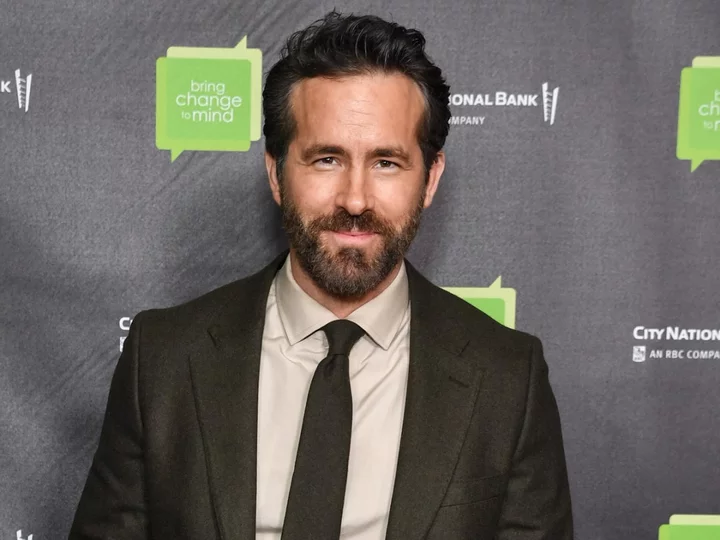
Ryan Reynolds opens up about how his mental health spins ‘out of control’
Ryan Reynolds has spoken candidly about his mental health, revealing that his mind can “spin out of control” sometimes. The actor, 46, spoke candidly about his mental health challenges during an interview with Page Six on 9 October, while attending non-profit organisation Bring Change to Mind’s annual Revels & Revelations Gala. Speaking to the outlet, he revealed that he’s found himself spinning “out of control” at times, before noting that he’s “not always great” at maintaining his mental equilibrium. However, Reynolds shared some routines that he follows when struggling with his mental health. “I certainly have my own little rituals and those kinds of things that help me stay grounded and keep my mind from spinning out of control,” he said. “Sometimes I’m really good at it, sometimes I’m not.” The Deadpool star noted that when he becomes aware of those “out of control” moments, he meditates in order to “take the time” for himself to regroup. He also shared how he’s become aware of his own lifestyle traits that he wants to work on amid his mental health struggles. “I tend to overbook myself when I’m spiraling that way,” he said. “I’m sort of aware of that stuff and I manage it as well as you can.” This isn’t the first time that Reynolds has spoken out about his mental health. He first opened up about his struggles with anxiety in February 2022 during an appearance on CBS’s Sunday Morning. “I’ve had anxiety my whole life really and you know, I feel like I have two parts of my personality. That one takes over when that happens,” he said. He also recalled how his feelings of anxiety would intensify before appearances on talk shows, such as Late Night With David Letterman. “I remember I’d be standing backstage before the curtain would open,” he said. “And I would think to myself: ‘I’m gonna die. I’m literally gonna die here. The curtain’s gonna open and I’m just gonna be a symphony of vomit.’ Just, like, something horrible’s gonna happen!” The Green Lantern star then noted that “as soon as that curtain opens” before he goes on stage, “this little guy takes over” that ultimately helps him manage his anxiety. “And he’s like: ‘I got this. You’re cool.’ I feel, like, my heart rate drop and my breathing calm, and I just sort of go out and I’m this different person. And I leave that interview going: ‘God, I’d love to be that guy!’” he said. During his appearance at Bring Change to Mind’s event on 11 October, Reynolds also discussed conversations that he and his wife, Blake Lively, have with their children about mental health. “I think it’s more about talking to them about everything,” he told People at the gala. “It’s genuine when I say I take a huge interest in their days and how things are going.” Reynolds and Lively, who’ve been married since 2012, share three daughters: James, eight, Inez, seven, and Betty, four. In February, they welcomed their fourth child, whose name hasn’t been publicly revealed. The Free Guy star also explained that the “best time” of his day is when he walks his children to and from school. When discussing some of the challenges that children often face, Reynolds praised his daughters for the self-awareness they’ve developed. “I think as parents, we are so much better equipped to handle the rigours of childhood through our kids now than when I was a kid. It’s just totally different now,” he said. “People are much more self-aware. And that’s the thing we sort of hang our hat on the most is self-awareness with our kids. Not be happy, not be anything, just be self-aware and welcome everything in.” Read More Ryan Reynolds describes experience attending Travis Kelce’s game with Taylor Swift From double dates to parenthood: A timeline of Blake Lively and Ryan Reynolds’ relationship NFL defends Taylor Swift coverage during games as Travis Kelce says they’re ‘overdoing it’ Ryan Reynolds describes experience attending Travis Kelce’s game with Taylor Swift Pokemon’s Detective Pikachu Returns and more top games of the week Travis Kelce reveals the two people who helped him woo Taylor Swift
2023-10-11 05:20

Israel-Hamas conflict: How to talk to teenagers about distressing news stories
With all the access teenagers today have to the internet and social media, they may see more distressing news stories than even their parents. Palestinian militant group Hamas – deemed a terrorist group by the UK Government – invaded Israel on Saturday from Gaza, with rocket attacks by air as well as military in boats. Since then, Israel has sealed the Hamas-ruled Gaza Strip off from food, fuel, medicine and other supplies, while launching retaliatory air strikes on the territory, which is home to 2.3 million people. The most recent numbers suggest 900 people have been killed in Israel, 700 in the Gaza territory and the West Bank, and many hostages have been taken. Hamas has pledged to kill captured Israeli hostages if attacks target civilians in Gaza. The conflict has sparked protests by pro-Palastine and pro-Israel groups in the UK and prompted political division on social media. Teenagers are likely to be exposed to a lot of the news, internet discussion and perhaps distressing images of conflict. So how should parents approach this? Talk about it at home Dr Jeri Tikare, clinical psychologist at Kooth, a digital mental health platform, believes parents should be as truthful as they can with their teenagers. “This means that it is important for us to not to hide things away from them. It is better for them to hear it from us (their people of safety) as opposed to reading it or hearing it from others,” he says. “Also bearing in mind the curious nature of the mind. It is inevitable that for things that they do not understand, they might research and look for answers. “It can be helpful if they get their information from a reliable source which can feel contained and reassuring. But share information at a level that is developmentally right and just enough to help the young person feel contained and safe.” Check yourself As the parent, learn the basics of what is going in the conflict yourself from reputable sources so you can have balanced, informed conversations with your child. “It can also be useful to be aware of our own reactions as parents or primary caregivers,” he says. “One of the ways young people learn and develop is via observing and then modelling adult behaviour. Hence, they can pick up anxieties or worries displayed by parents.” Validate and normalise expressing emotion If your teen is particularly affected by distressing news stories about war and conflict, Tikare encourages parents to give their teenagers the opportunity to express how they are feeling in different ways – such as writing, drawing, stories, songs, and things that feel helpful for the young person. “Some find a feelings box helpful,” he adds. “It might also be helpful to introduce them to some simple relaxation techniques such as taking three deep, slow breaths, breathing in for a count of three and out for three.” Be there for them Giving your teenager the space, time and encouragement to open up about how they feel on any subject – world news or otherwise – is key. “I know that life can be hard, busy and sometimes young people are aware of this and might not want to disturb you,” Tikare says. “Therefore, it might be helpful to make a conscious effort to let them know that you are mindful of how difficult it can be and reassure them that you are available to talk about things. “Giving them extra love and attention at this time can be helpful, especially at difficult times like this.” Discuss social media Tikare acknowledges that television, social media and other platforms “can be very distressing and exacerbating” for teenagers. But you may not be able to prise your child away from posting on their social media accounts altogether. “It would depend on the motivation behind posting and where they are posting,” Tikare says. “Posting about the feelings experienced around the conflict in a supportive and possibly moderated space, with people sharing similar feelings associated with the conflict, can help normalise the experience and leave them feeling less alone. “On the other hand, it could also expose them to content and comments that could potentially trigger distress.” So be sure to make them aware of the content they may come across online. Read More Autumn décor ideas for a seasonal refresh Why you shouldn’t tidy your garden too much in autumn World Mental Health Day: 5 ways to beat anxiety and change your life Alternative veg to grow for next season How to spot if your child is struggling with their mental health – and what to do next Does your pillowcase make a difference to your skin and hair health?
2023-10-10 20:51
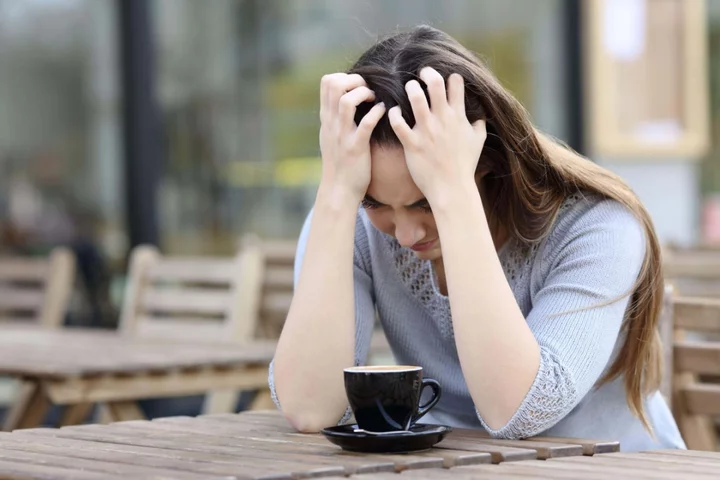
World Mental Health Day: 5 ways to beat anxiety and change your life
Anxiety is something that touches most of us, to a greater or lesser extent. Although it may just be a temporary blip for some people, for many, anxiety is a diagnosed condition that blights their lives. Indeed, Mental Health UK estimates more than one in 10 people in the UK are living with an anxiety disorder – that’s over eight million of us. And World Mental Health Day (October 10) is a chance to address the topic, agrees clinical psychologist Dr Kirren Schnack – author of the new book Ten Times Calmer: Beat Anxiety And Change Your Life. “It’s a reminder that mental wellbeing is just as important as physical health,” she says, pointing out that anxiety disorders are among the most widespread mental health issues globally. “Clinically, I’ve seen more and more people coming in with anxiety issue. The pandemic has played a significant role in this surge, introducing unprecedented levels of uncertainty, fear, and social isolation. At the same time, global economic instability and job losses have intensified stress and anxiety for many,” Schnack adds. “The widespread use of digital technology and social media has exposed people to a constant stream of alarming news and comparison-driven content that also feeds anxiety.” Schnack explains that anxiety disorders include generalised anxiety disorder (GAD), which causes chronic worry and hinders decision-making; health anxiety, where there’s an excessive preoccupation with diseases and illness; panic disorder, which is marked by sudden overwhelming panic attacks; and social anxiety, which leads to avoidance, isolation and low confidence. “They can blight daily life through physical symptoms, cognitive impairment, social isolation, disrupted routines, and emotional distress,” she says. Schnack suggests these five ways to combat anxiety problems and find calm… 1. Calm your stressed nervous system Anxiety places significant strain on the nervous system, Schnack explains, but there are simple daily practices that can help alleviate this stress. One is focusing on breathing, extending your exhale longer than your inhale. To do this, Schnack says you need to inhale gently through your nose, pause for a few seconds, then exhale slowly and deeply, ensuring an extended exhale. “A longer exhale helps by increasing the activation of the body’s parasympathetic nervous system, which counteracts stress hormones, lowers heart rate, and reduces overall physiological stress,” she says. She suggests around three to five of the breaths are repeated on multiple occasions throughout the day, and stresses that consistency is key. “Recognise that if anxiety has been a longstanding presence, it will take time and patience to restore your nervous system’s sense of safety and stability.” 2. Address anxious thoughts Schnack explains that anxiety often generates anxious thoughts that can seem like undeniable facts that are often dwelled on and reacted to, thus intensifying anxiety. “To break free from this cycle, it’s crucial to consciously confront and process these anxious thoughts,” she says. To do this, write a simple record, noting the date of your anxious prediction, describing what it was, and then, after a specified time like a day or two, return to what you’ve written and confirm whether the prediction was accurate by marking it as ‘yes’ or ‘no’. When the prediction doesn’t materialise, make a note of the actual outcome. Revisit the record, especially during anxious moments, and count the yes or no entries to reflect on your progress. “This practice trains your mind to adopt a broader, less anxious perspective,” explains Schnack. 3. Stop over-focusing on anxiety“People struggling with anxiety often find it challenging to shift their attention away from anxiety symptoms, leading to a persistent preoccupation that can worsen their problems,” says Schnack, who explains that this preoccupation can lead to excessive self-analysis, fixation on physical sensations or repetitive thoughts, and being hypervigilant. To shift your attention away from overwhelming anxiety, Schnack suggests trying this exercise: choose a colour, such as blue, and actively seek out blue objects in your surroundings. Name them out loud, and count them as you move around, possibly describing the item too. “Strive to maintain this focus for a few minutes, switching to different colours if necessary. Again, consistency is crucial, so make an effort to practice this regularly whenever anxiety hijacks your attention,” she advises. 4. Learn to tolerate uncertainty Recognising and addressing uncertainty is vital when dealing with anxiety, Schnack stresses. “You can’t resolve every uncertainty in life – the key lies in enhancing your ability to tolerate uncertainty so you can reduce your anxiety,” she explains. “Being more accepting of the fact that things may not always go as planned or that the future is uncertain can be incredibly liberating.” To help build resilience against uncertainty, Schnack advises people to take a moment to slow down and not immediately engage in reactive behaviour demanded by uncertainty, such as checking, Googling or avoiding things. Instead, she says, note your feelings, observing what uncertainty is doing to your mind and body, and write out an affirmation such as: ‘I’m feeling anxious because I’m uncertain about… My typical response to uncertainty is to engage in… behaviour. I recognise this only worsens my anxiety. My goal is to distance myself from anxiety rather than gravitate towards it. I can sit with the feeling of uncertainty for as long as I can, and build on this time until I get better and better at it.’ 5. Gradually face your fearsConfronting your fears is an effective way to overcome them, observes Schnack, although this can often feel overwhelming. “When you confront your fears, you’re essentially acting in opposition to your anxious thoughts and what anxiety is telling you. This process weakens anxiety’s grip on you, and when the actual outcomes don’t align with your anxious predictions, your mind can naturally adjust its thinking.” She suggests starting with small steps and gradually building up. So, for social anxiety, gradually start by saying a simple sentence or asking a basic closed question, and gradually building up from there. For health anxiety, gradually reduce and eliminate excessive online researching about illness and diseases, starting with small-time durations and then building on that. For panic disorder, gradually spend more time in places you typically avoid, starting with short durations like 30 seconds, then a few minutes, and gradually keep increasing the time. “Remember to repeatedly face your fears to make meaningful progress – it’s not just a one time thing,” adds Schnack. Ten Times Calmer: Beat Anxiety And Change Your Life by Dr Kirren Schnack is published by Bluebird, priced £16.99. Available now. Read More Alternative veg to grow for next season How to spot if your child is struggling with their mental health – and what to do next Does your pillowcase make a difference to your skin and hair health? Sarah Jessica Parker channels Carrie Bradshaw on the red carpet in mismatched shoes Does your pillowcase make a difference to your skin and hair health? As transphobic hate crimes rise by 11% in a year, how to be a better ally
2023-10-10 14:20

Obsessed with Boursin? It’s the perfect way to elevate your leftovers
We threw away 68,000 tons of perfectly good food over the summer. Let that sink in for a moment. Overstocking, the heat, spontaneous social plans and having less motivation to cook were some of the main culprits, according to new research by Boursin. The most commonly wasted ingredients included sad vegetables, soggy pasta, wilted salad leaves and stale bread. Surprisingly, chicken, fish and even cheese made the top 20 list of frequently wasted foods. In an effort to put a stopper in this cycle, Boursin has teamed up with Great British Bake Off star Manon LagreÌ€ve to serve up simple solutions for reducing food waste. Aimed at the 67 per cent of us who prefer to cook simpler and less time-consuming dishes through simple family friendly recipes, LagreÌ€ve’s recipes showcase how British culinary classics can be easily elevated with the nation’s favourite indulgent cheese, Boursin, and a unique French twist. So dig out the leftovers from the fridge, grab a pack of Boursin, and get cooking. Vegetable Provencal Boursian tian Serves: 4-6 Ingredients: 150g of dry rice 2 tbsp of Boursin Garlic & Herbs, plus 1 tbsp to top the Tian with 2 tbsp of olive oil 2 courgettes 1 aubergine 6 tomatoes 1 red onion 3 cloves of garlic 2 tsp of herbes de Provence Salt and Pepper Method: 1. Slice the aubergine and place face down in the tin, generously season with salt and leave to soak and release moisture. 2. Place the rice in a pan, with 300ml of water, ½ tsp of salt, cover and bring to boil. Once it is boiling, remove from the heat and leave for 10 minutes covered. 3. Wash and slice courgettes, tomatoes, onions and garlic. 4. Rince the aubergines, pat dry with a kitchen towel and brush with some olive oil. 5. Pre heat the oven to 180C fan oven. To assemble the Tian, drizzle some olive oil at the bottom of the tin, spread the cooked rice and crumble the 2 tbsp of Boursin on top. 6. Cover the rice with the vegetable slices, tomato, courgette, aubergine, onion, garlic then drizzle with olive oil, herbe de provence, and season well with salt and pepper. 7. Cook for 45 minutes to 1hour and serve hot! Almond and Boursin grilled cod, with frites and peas Serves: 4 Ingredients: 4 filets of cod, skin off 50g of shaved almonds 2 tsp of Boursin Garlic & Herbs 1 egg 1 tbsp of breadcrumbs Fresh chives 1kg of potatoes 45ml of vegetable oil 500g of fresh peas 1 medium onion 2 tsp of salted butter 3 garlic cloves 2 tbsp of mayonnaise 1 tbsp Boursin Garlic & Herbs Salt and pepper Method: 1. Start by peeling the potatoes and cutting them into thin French Fries. Place them in a large bowl of hot water and leave them to soak for 10 minutes. 2. Preheat the oven to 220C. 3. Rinse and pat dry. Add the vegetable oil, 1 tsp of coarse salt and mix with your hands. Transfer to a large roasting tin to create one layer. Put a timer on for 20 minutes. 4. In the meantime, prepare the crust by mixing the almonds, Boursin, eggs and the egg. 5. Slice the onions and place in a roasting tin with the peas, garlic and salted butter diced. Add the cod on top of the peas, season with salt and pepper then divide the crust and spread it on top of the cod. 6. Use a spatula to mix the French fries in the oven and place at the bottom of the oven, turn the temperature down to 210C and cook for 10 to 12 minutes. 7. Make the Boursin mayo and serve the fish on top of the peas, add some dill and the French fries. Voila! Creamy plant-based Boursin pasta (vegan) Serves: 4 Ingredients: 400g of dry pasta (or leftover cooked pasta) 100g of fresh peas cooked. 100g of pine nuts 300g of cherry tomatoes 1 pack of Boursin Plant-Based (130g) 2 tbsp of olive oil ½ red onion A small bunch of fresh basil Salt and pepper Method: 1. In a pan, fry the diced onions with the olive oil for a couple of minutes, then add the cherry tomatoes and fry for 3 minutes. 2. Use a spatula to pop in some of the tomatoes. Add the pine nuts and a couple of tbsp of water if needed. Season with salt and pepper and set aside. 3. Cook the pasta in salted water respecting the package instructions. 4. Remove the sauce from the heat, mix the Boursin in with a fork in a bowl, then add to the tomato sauce. Finally pour the just cooked pasta over the top. 5. Serve the pasta, top with some peas, a tsp of plant-based Boursin and some fresh basil. Boursin and spinach stuffed chicken roulade Serves: 4 Ingredients: 4 chicken breasts 300g of baby spinach 2 tbsp of breadcrumbs 100g of Boursin Garlic & Herbs 4 slices of Jambon de Bayonne or Parma ham 1 big white cabbage 2 tbps of salted butter at room temperature 2 tbsp of Boursin Garlic & Herbs 500ml of boiling water 2 tbsp of olive oil A sprinkle of parsley Method: 1. Place the baby spinach in a colander and pour the boiling water over to cook it. Then press it against the colander to remove as much moisture as possible. 2. In a bowl, mix the cooked spinach, breadcrumbs and Boursin to make a paste. 3. Spread a chicken breast, then slice the thicker side from the inside to extend the chicken breast and make it thinner and larger. Spread 1 tbsp of the Boursin mix in the middle and roll the breast to make a tight roulade. Then wrap the chicken breast with the Parma ham and place in an oven dish. Repeat with the rest of the chicken breasts. Set aside in a roasting tin. 4. Pre heat the oven to 200C fan. 5. Cut the cabbage into wedges and dip in water to add moisture. Drizzle a roasting tin with olive oil and place the wedges on top. Mix the Boursin and butter together and brush it over the cabbage wedges. Season with salt and pepper. 6. Place the chicken on top of the oven shelf and the cabbage at the bottom and roast for 30 minutes. 7. Baste the chicken with the juices a couple of times through cooking. 8. Serve hot and sprinkle with parsley. Boursin and butternut squash filled conchiglioni (vegetarian) Ingredients: For the stuffing: 500g of squash or pumpkin, diced skin off 1 tbsp of olive oil 100g of parmesan 100g of Boursin Garlic & Herbs For the sauce: 2 cans of good quality diced tomatoes 4 garlic cloves 1 vegetable stock cube 1 tbsp of sugar 1 tsp of dried oregano 1 bunch of fresh basil Salt and pepper 2 tbsp of olive oil Extras/alternatives: Mozzarella Extra Boursin Garlic & Herbs 500g of large conchiglioni Method: 1. Pre heat the oven to 220C and roast the squash with the olive oil for 30 minutes until tender. 2. In the meantime, start to make the sauce. Add the olive oil and the diced garlic and fry on medium heat for a few minutes, add the oregano and half of the fresh basil and fry for another minute. Add the canned tomatoes, the stock cube and 100ml of water. 3. Add the sugar and leave to simmer on low heat until the end of the recipe. 4. In a blender or a food processor, add the rest of the stuffing ingredients and the roasted squash and season then, blend for a minute. Pour that into a piping bag. 5. Season the tomato sauce to taste with salt and pepper. Optional, you can use your food processor to blend it to a smooth sauce if you wish. 6. Pour the tomato sauce onto an oven dish and start to fill up the Conchiglioni one by one, simply using the piping bag. Spread the filled Conchiglioni on top of the tomato sauce. 7. Top with the mozzarella and crumble some Boursin. Cover with tin foil. 8. Cook for 40min at 200C covered, then remove the foil and cook for another 10 minutes. Boursin hachis parmentier Ingredients: 500g of mince beef 1 shallot 1 onion 3 carrots 2 cloves of garlic 30g of butter Salt and pepper 1kg of potatoes 50g of butter 200ml of warm milk ½ tsp of nutmeg 1 broccoli 100g of Boursin Garlic & Herbs, plus extra to crumble Method: 1. Peel and dice the potatoes and transfer to a large pan, cover with cold water, generous amount of salt for 30 minutes. 2. Dice the carrots, onion, shallot and garlic. Heat up a pan, add the 30g of butter and the carrots, onion, shallots and garlic. Fry for a few minutes until softened. 3. Add the minced beef to the pan and cook for 10 minutes. Season with salt and pepper. 4. Transfer the meat to your oven tin and set aside. 5. Boil and cook the broccoli in salted water for 8-10 minutes. Drain the water, then mash the broccoli with a masher or a fork and add the Boursin to it. 6. To make the purée, drain the water from the potatoes, then add the warm milk, the 50g of butter and season well with salt and pepper. Mash the potatoes with a masher to make the purée. 7. Preheat oven to 220C fan. 8. To finish the Hachis, spread the purée on top of the mince, spoon the broccoli on top of the purée and make some swirls with a fork. Sprinkle some Boursin on top. 9. Place in the oven for 10 to 15 minutes and serve hot with a small, dressed salad. Read More Budget Bites: Three one-pan recipes that minimise on washing up Cold-weather recipes to get on your radar now How to cook to keep your gut healthy Three recipes from Michel Roux’s new fuss-free French cookbook Formula for the ‘perfect’ fish finger sandwich revealed Being vegetarian may partly be in one’s genes, study finds
2023-10-10 13:50

Elizabeth Hurley issues reminder to women about getting mammograms as she raises awareness about breast cancer
Elizabeth Hurley has issued a reminder to women about getting mammograms, in honour of her partnership with Estée Lauder’s Breast Cancer Awareness campaign. The model, 58, spoke candidly about mammograms – which are X-rays performed on women’s breasts to screen for cancer – during a recent interview withUs Weekly. While discussing her last 28 years as the ambassador of Estée Lauder’s campaign, she told women that if they feel something “abnormal” when examining their bodies, they shouldn’t hesitate to get it checked by a doctor. “I think the most important thing you can do is familiarise yourself with your breasts because they’re yours and only you know how they feel,” she said. “You should recognise something when it’s abnormal, and you should go to the doctor right away.” Hurley emphasised that annual screenings for breast cancer are not only “vital,” but they should be considered a part of “looking after your health in every way”. She also went on to urge women to be “breast cancer bullies” by continuing to encourage their loved ones to get checked for the disease. “Make sure your friends, your family, your mother, your grandmother, that they’re going for their screenings regularly and urge them to self-check,” she said. “It doesn’t discriminate. It can hit anybody. Some groups are more vulnerable than others.” She also made a reference to one breast cancer that can be difficult to treat, triple-negative breast cancer, which “differs from other types of invasive breast cancer” because “it tends to grow and spread faster, has fewer treatment options, and tends to have a worse prognosis”, as noted by the American Cancer Society. The type of cancer can also be “more common in women younger than age 40, who are Black, or who have a BRCA1 mutation”. “It disproportionately affects Black women,” the Bedazzled star added. “It’s a diverse disease and it needs to be attacked in a diverse way.” According to the American Cancer Society, women between the ages of 45 and 54 “should get mammograms every year”. Meanwhile, women who are 55 and older can either “switch to a mammogram every other year, or they can choose to continue yearly mammograms”. In addition, women between the ages of 40 and 44 “have the option to start screening with a mammogram every year”. The organisation also noted that breast cancer is the most common cancer in women, with estimates of “about 297,790 new cases of invasive breast cancer” being diagnosed in women in the US in 2023. Over the years, Hurley has continued to speak about the importance of getting a mammogram. Last year, she joined Loose Women hosts Kaye Adams, Brenda Edwards, Nadia Sawalha, and Carol McGiffin for a self-examination on live TV. During the segment, she also opened up about losing her own grandmother to the disease, and how her attitudes towards breast cancer have shifted over time. “At that time nobody talked about it. There was no pink ribbon, no Breast Cancer Awareness month,” the Serving Sara star said, adding that when her grandmother first found a lump in her breast, she didn’t go to the doctor because she was “scared and embarrassed”. “When she finally went it was quite progressed. But she still never talked about it,” the model continued. “It’s still a life-threatening disease for many women, but times have changed. We talk about it now.” During her interview with Us Weekly, she went on to celebrate her 28th year with Estée Lauder’s Breast Cancer Awareness campaign, noting that Estée Lauder’s daughter-in-law, Evelyn Lauder, is the one who first asked her “to get involved” with the mission. “That’s how it started, and I’m still here. We’ve raised $118m, 93 million of which went straight to research,” she said. “The rest went to education, medical services, support groups [and more]. It’s a phenomenal achievement.” Read More Big Brother narrator Marcus Bentley: Meet the man behind TV’s most recognisable voice ‘Not guilty’: Elizabeth Hurley reacts to rumours she took Prince Harry’s virginity Elizabeth Hurley slams British Airways’ ‘dodgy service’ after getting stuck in Antigua Like Sophie Anderton, I have felt the shame of struggling to have a child of my own How to spot if your child is struggling with their mental health – and what to do next How to get rid of bedbugs: Signs and symptoms amid threat of UK invasion
2023-10-10 05:20

Ancient Roman sit of Pompeii is about to 'expand'
Pompeii, the ancient Roman city is set to expand. The Grande Pompei project, which will lay on free shuttle buses and shared tickets to other archaeological sites and villas in the vicinity.
2023-10-09 21:18
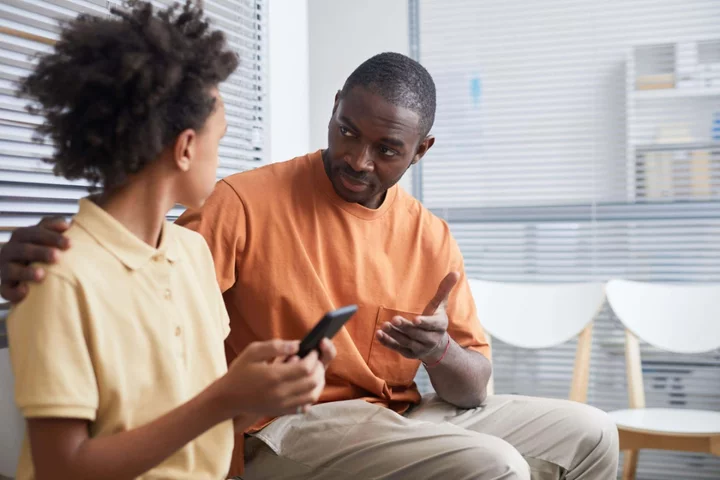
How to spot if your child is struggling with their mental health – and what to do next
Spotting when your child is struggling with their mental health, and knowing how to support them, can be tricky for parents and carers. It’s an important issue to be aware of, however. According to the Children’s Society, in the three years up to 2022, the likelihood of young people having a mental health problem increased by 50%, while children and young people’s mental health charity Place2Be says one in six children experience mental health difficulties, rising to one in four amongst 17–19-year-olds. Emotional disorders including depression and anxiety are among the most common problems to crop up. James Emmett, regional clinical lead at Place2Be, says although the Government has taken “great strides” to address the issue by introducing support teams and senior mental health leads in schools, “we’re still seeing a sharp increase in diagnosable mental health conditions among children and young people, now affecting one in six children – which is around five in every classroom”. Stevie Goulding, senior manager for parents and carers services at the charity YoungMinds, says: “More young people than ever are struggling with their mental health and are in need of support. This generation is facing a unique set of pressures – living through a pandemic, a cost-of-living crisis and ongoing global instability – and they’re worried about their future. “As young people navigate the ups and downs of growing up, recognising when to be concerned about your child’s mental health can be difficult.” Here, Goulding and Emmett outline how parents can spot whether their child may be struggling, and how to help… 1. Look for behaviour changes A change in behaviour is usually the first sign that a child or young person is feeling low, says Emmett: “They may eat too much or not enough, have problems sleeping, or stop doing things they normally enjoy.” Goulding adds: “If you notice changes in your child’s behaviour or if they appear persistently distressed, it could mean they’re struggling with their mental health, and it’s important to take their concerns seriously.” 2. Give them the opportunity to talk Goulding suggests parents try to talk to their child or teen about how they’re feeling in a non-judgemental way. “Remember, they might not want to open up at first, so reassure them you’re there for them when they’re ready to talk. Remind them it’s ok for them to feel scared or unsure, and try to reassure them,” she advises. 3. Don’t force them to talk However, Emmett says sometimes they may not want to talk, adding: “It’s important that adults don’t force them to have a conversation they don’t want to have. Parents and carers must make sure they’re available – but don’t pressure them to talk. “It can be really tempting to ask a lot of questions, but it’s easy to slip into interrogation mode. Try to focus on the here and now and what would help moving forward.” 4. Choose your momentAvoid discussing the underlying causes of your child’s distress with them during intense moments, Goulding advises: “While it’s crucial to provide support, it can be more beneficial to address these topics when they’re feeling calmer.” 5. Ask how they’re feeling Ask if your child notices when they feel more or less sad, for example, at school, or when they’re with their friends and family, suggests Emmett. “Responding sensitively to your child’s signals with concern and interest will help them learn you’re there for them,” he notes. Goulding says parents can acknowledge their child’s feelings by saying something like: ‘It’s completely understandable that you’re feeling…’. She explains: “This helps to reassure them their feelings are valid and it’s ok to feel different emotions.” 6. Remind them of obstacles they’ve overcome in the past When a child or young person gets overwhelmed, they forget just how much they’ve already dealt with in their lives. “Tell them stories about how proud you were when they coped with certain moments in their life, such as an sitting an exam, or moving house,” says Emmett. “This will remind them of their resilience – their ability to adapt to difficult situations.” 7. Encourage them to stay active Physical and mental wellbeing are often linked. “This means doing something active can be a great way to boost your child’s mental health, and heading outside into green space can have even greater benefits,” says Emmett. He suggests parents walk or cycle short distances with their child instead of going in a car: “It’s cheaper and will help the planet to be healthier too.” 8. Model positive relationships Happy relationships between parents and significant adults lead to better mental and physical health for everyone, stresses Emmett. “By modelling positive relationships of your own, you can help your child to see what positive, healthy and meaningful relationships should look like – and to recognise when friendships aren’t positive,” he says. 9. Remind them how they feel will change Your child might not be able to see the light at the end of the dark tunnel they’re in. “Reassure your child that how they’re feeling is temporary,” says Goulding. “Things can change and they can feel better.” 10. Discuss what help is available Talk to your child about the different sources of help that are available, such as helplines, text lines and online chat services. “Reassure them it’s alright to confide in others, as young people often worry about upsetting their parents,” says Goulding. As well as YoungMinds parents’ helpline (0808 802 5544) and Place2Be, other sources include your child’s school, which will have a designated senior mental health lead, your GP who can refer your child to CAMHS, Parenting Smart, which provides free advice for parents and carers of 4–11-year-olds on how to support their child’s wellbeing and behaviour, and the free Shout 24/7 textline for anyone in crisis (text SHOUT to 85258). Read More Does your pillowcase make a difference to your skin and hair health? Sarah Jessica Parker channels Carrie Bradshaw on the red carpet in mismatched shoes Does your pillowcase make a difference to your skin and hair health? As transphobic hate crimes rise by 11% in a year, how to be a better ally Impact of relationships with AI chatbot programmes ‘worrying’, psychologist says Pokemon’s Detective Pikachu Returns and more top games of the week
2023-10-09 14:47

Chris Hemsworth reveals ‘shocking’ Alzheimer’s warning
Chris Hemsworth has opened up about his fitness and lifestyle changes he’s made in the wake of a “shocking” health warning. The Australian actor, 39, discovered during the filming of National Geographic series Limitless that his DNA contains two copies of the gene APOE4, which has been linked to an increased risk of Alzheimer’s disease. Speaking about the news, the actor, who plays Thor in the Marvel Cinematic Universe (MCU), told Vanity Fair: “They took all my bloodwork and did a bunch of tests and the plan was to on-camera tell me all the results and then talk about how you can improve this and that. “And Peter Attia, who is the longevity doctor in that episode, and overseeing a lot of the show, called [show creator] Darren [Aronofsky] and said, ‘I don’t want to tell him this on camera. We need to have an off-side conversation and see if he even wants this to be in the show.’ “It was pretty shocking because he called me up and he told me.” Hemsworth explained that he had certainly not expected to receive such “intense” news as the show was originally intended to be a “fun” way of exploring “longevity”. However, he said: “It was a really good catalyst to dive into everything I needed to be doing in either the prevention front or the management front. “There was an intensity to navigating it. Most of us, we like to avoid speaking about death in the hope that we’ll somehow avoid it.” Speaking on camera about the discovery, Hemsworth said: “You’re constantly thinking you’re going to live forever, especially as a young individual. Then to be told that this might be the thing that might take you out was like, whoa... it kinda floored me.” Since then, Hemsworth has upheaved his life, and revealed the changes he’s introduced after sdis overing the news. Speaking to Men’s Health, Hemsworth, who is known for his muscly physique, said he is “incorporating more solitude into his life” and has lowered the amount he exercises. “I’ve always been pretty consistent with my exercise commitments, but lately I’ve really felt the importance of taking time for yourself without any outside voice or stimulation and making time for stillness,” he told the outlet. The actor, who is sleeping more regularly as well as having ice baths, also addressed the way his physique changes for roles, stating: “My weight fluctuates a lot due to differing roles and also my own interests in regards to challenging my body in different ways.” He continued: “‘I’m lifting less frequently than I was and I’m incorporating more cardio and endurance workouts which I much prefer than heavy body building style sessions.’ Read More The form of exercise that can help prevent Alzheimer’s disease, according to new study Chris Hemsworth criticises Taika Waititi’s Thor film for being ‘too silly’ This is the lesser-known symptom of Alzheimer’s that could affect drivers Brits reveal advice they would give their younger selves What ‘healthy obesity’ really means according to the experts How to get rid of bedbugs: Signs and symptoms amid threat of UK invasion
2023-10-06 21:25

Brits reveal advice they would give their younger selves - including investing in property
Brits have revealed the advice they would give their younger selves – including investing in property as early as possible, taking more photos and not being afraid of rejection when asking someone out. A survey of 2,000 adults found 58 per cent would love nothing more than to give the younger version of themselves some good tips. Those surveyed said they would look after their physical health more, avoid wasting their time on negative people and learn from their mistakes. The top 20 list also included recommendations to save 10 per cent of your wages every month, spend more time with your parents and celebrate the little wins. But while 67 per cent would offer financial words of wisdom, 82 per cent felt positive knowing every decision they’ve made has led them to the point where they are now. And the same percentage (82 per cent) wanted to live their life with no regrets. AXA UK commissioned the study as part of its ‘Future You will thank you’ campaign which looks at how our future selves will thank us for the good choices we make today and reveals the decisions people are most thankful for. Scarlette Douglas, former A Place in The Sun host and I’m A Celebrity contestant, is taking part in the campaign discussing the forks in the road which led her to a career in television. She has contributed to an eBook revealing more of these insights from celebrities and the public. Scarlette said: “I had been performing in musicals for eight years when I made what I feel was a great decision at that point in my life, which was to move away from theatre and pursue a different career in television presenting. “I finished my last musical in 2014 and in 2015 I landed an amazing job as a presenter for A Place in The Sun – I had my first presenting role on a Channel 4 show. “I’ve now been in television for eight years and if I didn’t take a leap of faith and make that decision to leave musical theatre and pursue television, I would never be where I am now.” The study also found buying a house as soon as possible, getting married and heading off abroad were some of the things people are most grateful to their young self for. But when it came to regrets, 39 per cent had at least one big one in their life. Of those, 56 per cent said these were romantically linked, while 35 per cent had health-related regrets. Others spoke about how they wish they got to know parents and loved ones better before they passed away. Although 27 per cent had learnt from some of the regrets their parents had experienced. Architect and TV presenter George Clarke is also involved with the campaign and spoke about his first home. He said: “When I bought my first ‘grown-up’ house it was a wreck and definitely a building project. “We had to live in it while we did the work bit by bit over the course of three years – it was a major project and at the time we didn’t have a lot of money, so it was work, earn, do building work... repeat. “It was a major refurbishment and what made it even harder was our child was born during the build too. All of it was a big risk, especially a financial one. “The house looked amazing when we completed it, and although we loved it the financial pressure and the length of the build took its toll and we made the decision to sell. “We were very lucky with the sale and we were able to buy another house just a few hundred yards from the one we’d sold – that project began the journey of setting ourselves up for life.” The research also revealed that dropping a phone down the toilet, having to pay hefty vet bills and having their home flooded were the situations where people regretted not getting insurance. There was a desire among those surveyed, by OnePoll, to say yes more often, with people wanting to experience new travel and holiday destinations (46 per cent), new social activities and plans (35 per cent) and new friendships (34 per cent). Jason Fox, TV broadcaster, former UK Special Forces soldier and Royal Marines Commando, is also taking part in the initiative. He said: “When I left the marines after 20 years of service, I suffered from PTSD and had to learn to look after my mental health. “I realised I could also be useful in the civil world, by showing others that mental wellbeing is a strength, not a weakness. “When I was able to, the best decision I made was to invest in my mental health initiative and organisation ‘Rock 2 Recovery’ to support others in similar situations.” Tara Foley, AXA UK’s CEO, said: “Every decision we make impacts our future, from the biggest life choices to the smallest. “The findings show most people are pretty happy with the majority of decisions they’ve made, but they wouldn’t be averse to going back and giving their younger self a bit of guidance to influence how things turned out further down the line. “It’s encouraging that so many people say they aren’t living their life with regrets and it’s good to see a real desire to experience new things and push the boundaries, such as visiting far-flung places or trying new activities. “Making sure you’re always covered for every eventuality – whether it’s car, home, business or health insurance – means you can take on whatever life throws at you without worrying about unforeseen consequences or unexpected financial challenges.” Top 10 pieces of advice many people wish they could tell their younger self: 1) Be more confident 2) Try not to care what other people think 3) Don’t let opportunities pass you by 4) Look after your physical health more 5) Don’t waste time with negative people 6) Learn from your mistakes 7) Save 10 per cent of your wages every month 8) Eat healthily as it will pay dividends down the line 9) Go on all the holidays you can 10) Invest in property as early as you can 11) Don’t just settle for things 12) Just relax and enjoy the ride 13) Look after your mental health better 14) Spend more time with your parents 15) Celebrate the little wins 16) Take more risks 17) Don’t be afraid of rejection when asking someone out 18) Always be there for your mates 19) Take more photos 20) Be disciplined with your time Read More Brits are so fed up with emails that retail giants now send reminder letters Adults are eager to explore the world alone over the next three years, study finds Study finds more people are moving into high flood zones, increasing risk of water disasters Chris Hemsworth shares big life changes after ‘shocking’ health warning How to get rid of bedbugs: Signs and symptoms amid threat of UK invasion I have felt the shame of infertility – it’s why I started a club for women like me
2023-10-06 19:51
